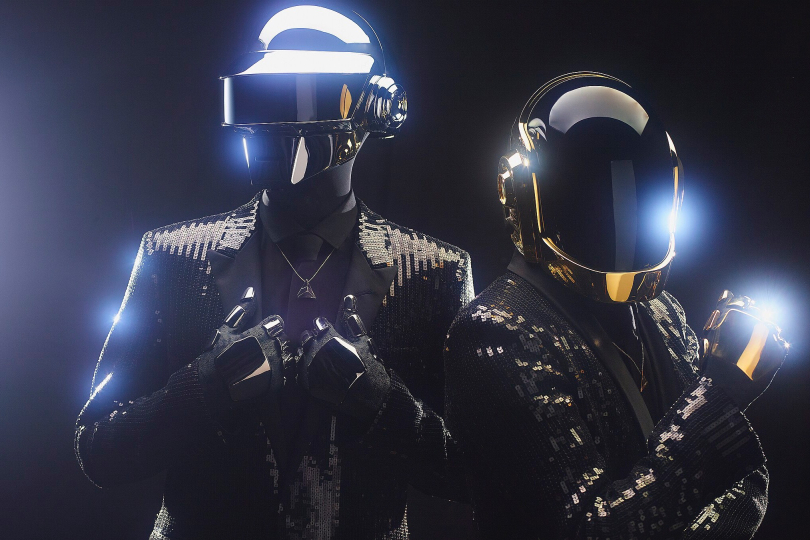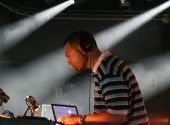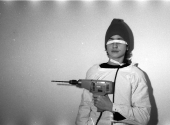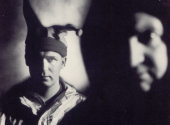
Milestones in Music History #48: Daft Punk, Faceless Greatness
The 1990s saw the emergence of a kind of musical expression that appealed to disco lovers, where music became important for its beat, rhythm and the catchiness of its melody. Such an electronic disco revolution was carried out by the most famous French duo in the history of electronics. Today we are talking about Daft Punk.
The 1990s were, in music circles, known as the years of grunge, alternative rock and nu-metal, and of distorted sounds and screaming. Youthful angst and turmoil were the main themes expressed in the lyrics. Certainly, partly because of the upheavals in the social, historical and economic spheres, what many musicians of that generation tried to express were mostly sombre feelings, and music became an outlet for the dissatisfactions of everyday life.
But while those years developed a "negative" discourse, so to speak, there were also people who needed music to bring forth from their souls the will to live, to laugh and to dance. For some, music was an expression of the joy of living, to forget the problems of existence instead of wallowing in them. And who could instruct on the greatness and benefits of joie de vivre better than two Frenchmen?
The approach to electronic music for Thomas Bangalter and Guy-Manuel de Homem-Christo came, however, not quite right away. Meeting at the Paris secondary school Lycée Carnot back in 1987, they established a deep friendship and decided to compose pieces together, using a rock and indie approach.
And so, in 1992 they formed a band, Darlin', where the two were joined by Laurent Brancowitz, who would eventually leave the group a couple of years later, to join the French band Phoenix. The name Darlin', after a long search, was taken from the famous Beach Boys song of the same name, covered by the band in a very neat way. Darlin' released a few songs through Duophonic Records, a British independent label founded in 1991 by British-French avant-pop group Stereolab.
In particular two songs, "Cindy, So Loud" and "Darlin’", ended up on the compilation Shimmies in Super 8, a rare collection published in 800 numbered copies in 1993, where Huggy Bear, Colm and Stereolab were also featured. Two more songs by indie rockers Darlin' were published in a second release by Banana Split, a collection released in 1995 entitled De La Viande Pour Le Disco? where the two pieces "Untitled 18" and "Untitled 33" appeared.
The songs were influenced by the Beach Boys, with a lot of importance placed on the melody and structure of the musical composition. It was something very different from what we know today. Still, Bangalter and de Homem-Christo were already preparing the foundations for their future success in those years.
The melody of "Cindy, So Loud" speaks volumes about how they would use vocals and backing vocals in the future. Surely "Darlin'" and "Untitled 33" are more oriented towards indie rock, but "Untitled 18" is exactly the prototype of the sound that the two Frenchmen would create and of what would become their signature.
The name they would choose for their band was born from a fortuitous circumstance. "Daft Punk" was born from a bad review of their music written by Dave Jennings for the English magazine Melody Maker in 1993. Jennings defined their style, precisely, as "daft punky thrash". And so it was that the two chose Daft Punk as the definitive name of their act.
Perhaps it was too outrageous a definition, but it couldn't better define their style and their musical philosophy. With the change of name and lineup – given that Laurent Brancowitz left Darlin' to join the band Phoenix, Daft Punk thus began its journey. At a rave organised at EuroDisney in 1993, they had the opportunity to meet Stuart Macmillan, part of the duo Slam together with Orde Meikle (both were also founders of the Soma Quality Recordings label).
They gave Macmillan a demo tape. From there was born the band's first official release, "The New Wave", in 1994. The single also contained the final remix of the song, which appeared under the title "Alive", and which would be included on their first album. Over the next year, the band worked on their second release, the song titled "Da Funk", which came out in 1995.
The decision to wear masks didn't come right away. The choice to wear masks (which in 2001 changed to wearing an entire robot costume) was apparently to protect their privacy, and to ensure that the focus was above all on their musical product, without considering the external appearance of the musician.
The choice was inspired by the protagonist of the film Phantom of the Paradise, a horror rock musical in which the actor constantly wears a mask; but the duo were also fans of the 70s band Space, who wore spacesuits with helmets during their performances. However, until the mid-1990s Bangalter and de Homem-Christo were still easily recognisable during their DJ sets, and they began to make themselves known by performing live at various events.
So, in 1996 they signed with Virgin Records, and finally, in 1997 their debut album, Homework, was released. The album wasn't initially conceived as such; but the songs, conceived as singles, were then put together on the album, seeing that it might make sense. Homework changed dance music forever, and the way we think about house music and the disco scene in general.
Greatly surpassing the phenomenon of Eurodance – a genre that combined elements of rap and disco, which originated in Central Europe (especially Germany) and was very popular since the end of the 80s – Daft Punk's music proposed itself as the only valid alternative to the background of the dance floors. And what an alternative it was.
The most appreciated and also most significant single of the album is certainly "Around the World", a dance carousel in which the musical elements are put together, one after the other, until the composition is complete, while the voice incessantly repeats (a whopping 144 times) the phrase that also gives the song its title. Its exceptional award-winning video shows several choreographic groups moving and personifying a different instrumental line. The video is simply – to put it in one word – unforgettable.
But in Homework, we find other pearls, such as the single "Da Funk", "Revolution 909" and "Burnin'". But it's really hard to leave out the other songs. A pure masterpiece, which definitively changed the canons of progressive house, paving the way for the new millennium. With Homework, Daft Punk charted a new path for dance music and changed the way we think about disco, and how we perceive the artist behind the musical product.
It is not difficult to understand their greatness, but it is impossible to describe their music. Homem-Christo has cited Primal Scream as his influence (Screamadelica in particular) and in the song "Teachers" they make a list of their musical influences: some names from Chicago house, from the Detroit techno scene (Romanhony, Todd Edwards, Paul Johnson), Dr. Dre and George Clinton.
The Daft Punk sound, which has its origin in Homework, is a mix of dance, techno, house, electro, synth-pop, rock and ambient; Bangalter in an interview a few years ago defined their sound as "retrofuturist". And this is perhaps the most accurate definition. The use of retro instrumentation, such as the Wurlitzer piano, combined with sampling and 70s disco influences, with the addition of crooners, a "soft" singing style " spread in the 80s – all this has the flavour of retrofuturism.
It is undeniable that what Daft Punk has perpetrated over all these years has been a real revolution in dance music. Even though the band officially broke up in 2021 by releasing a music video titled "Epilogue", their legacy will be talked about for ages. Many artists have remixed and reinterpreted their hits and have declared to have been influenced by them.
Among many, LCD Soundsystem (who also made the song "Daft Punk Is Playing at My House") and Kanye West (who used one of their samples for his song "Stronger"). Their adventure and their desire to ride and dominate a genre, to the point of completely distorting it, can be compared to the same desire to overcome the limits of The Dillinger Escape Plan, who will be the feature of our next episode of Milestones.
What are the "rules" of disco music today? How has the way of dancing and perceiving rhythm changed since the 90s? Will there be anyone bigger than Daft Punk in disco and house?
Leave your opinion in the comments below!
If you have found an error or typo in the article, please let us know by e-mail info@insounder.org.





